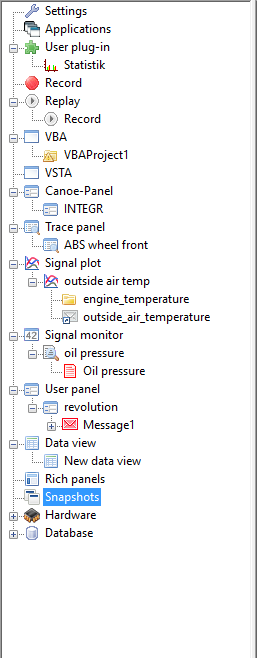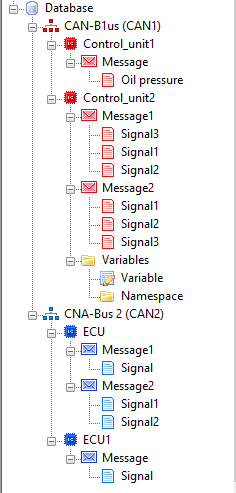The tree view shows – depending on the used license – the available core applications as well as all objects of the data base in a single tree structure. All central data base objects (ECUs, messages, signals) can be assigned to core applications for further monitoring and editing using drag & drop editing, opened in separate windows by a double-click and edited with a right mouse click.
|
|
Data base
The hierarchical object structure underlying the data base is as follows:
|
|
Attributes of buses, ECUs, messages and signals will not be shown in the tree view but only in the list view.
There are three ways of working with the objects inside the tree view:
•A double click on an object opens the panel to which an ECU is assigned or the corresponding window of a core application.
•Context menus enable access to several functions.
•Drag & drop: By pressing and holding the mouse key, objects inside the data base can be dragged and dropped within the tree structure according to defined rules. Furthermore, it is possible to drag data base objects directly into an open window of a core application. If an object is assigned to an incompatible application, the object cannot be dropped. This is indicated by a corresponding symbol.
| In addition to drag & drop editing, the keyboard shortcuts Ctrl-C (copy) and Ctrl-V (paste) are supported: An object can be marked in the tree, copied with Ctrl-C and added to a selected window, e.g. a trace or plot window, with Ctrl-V. |

